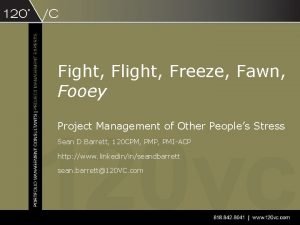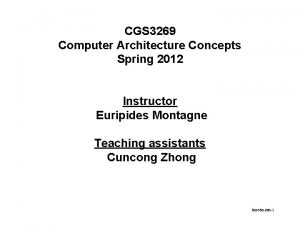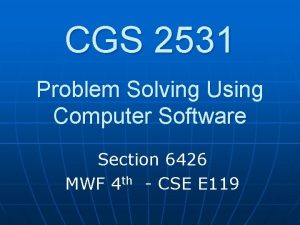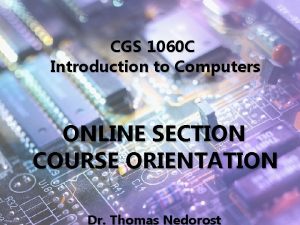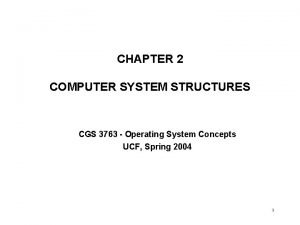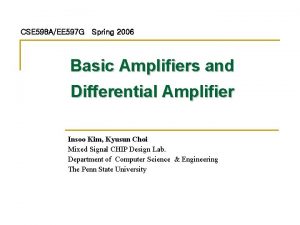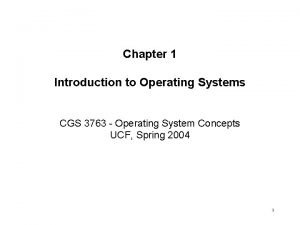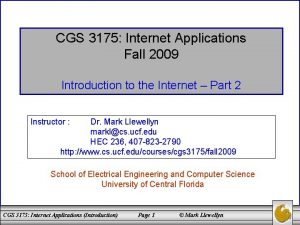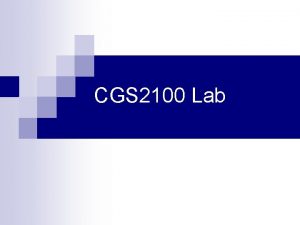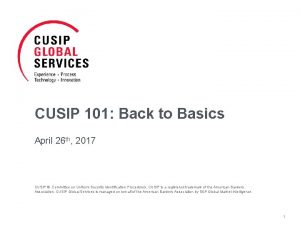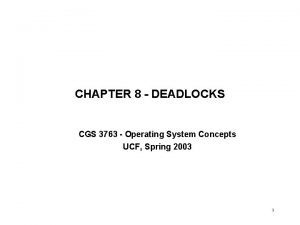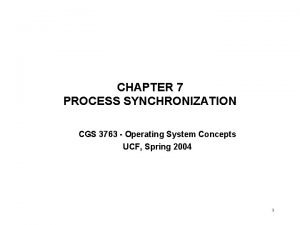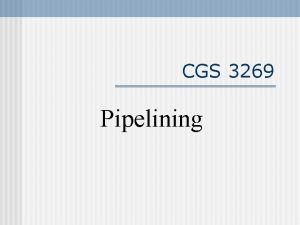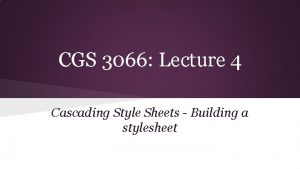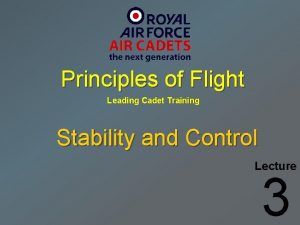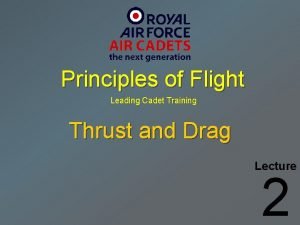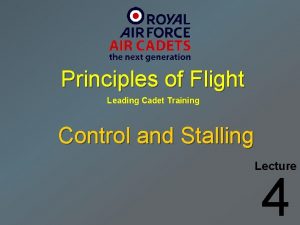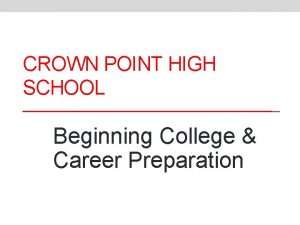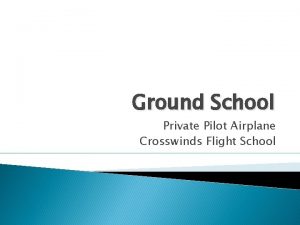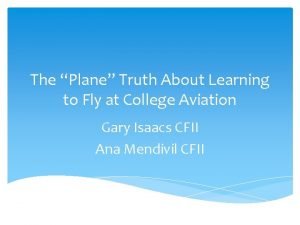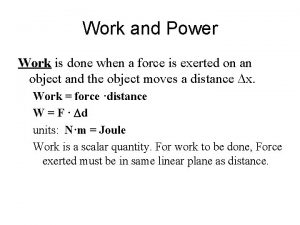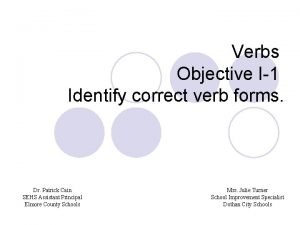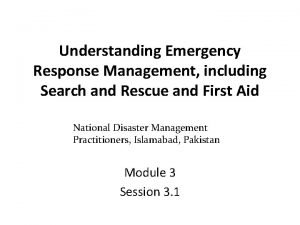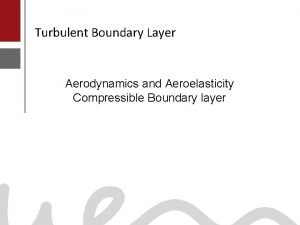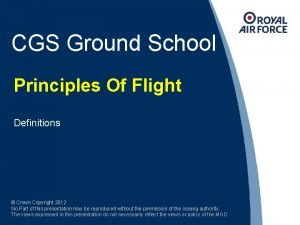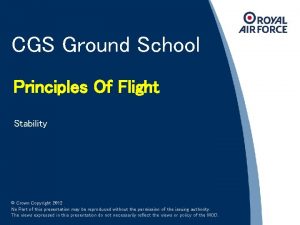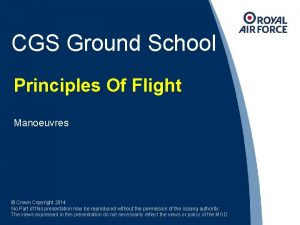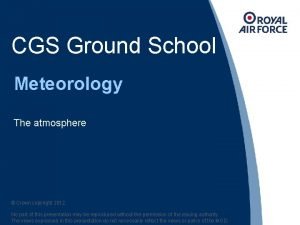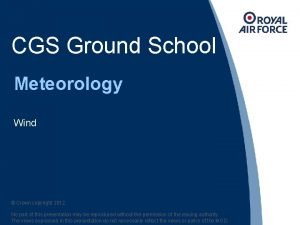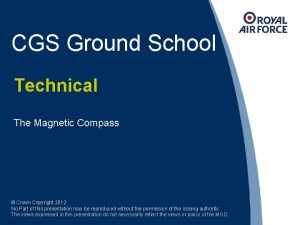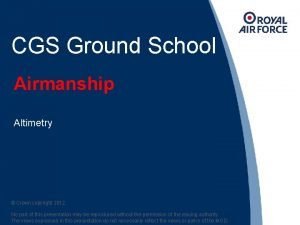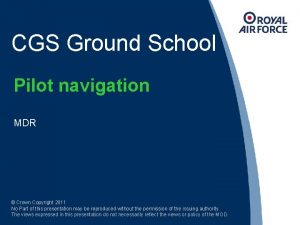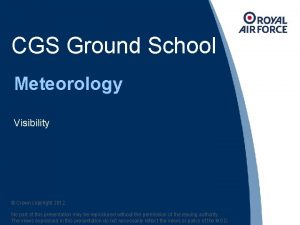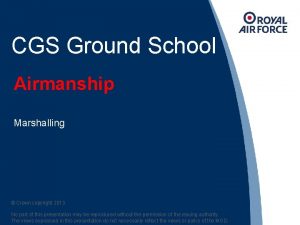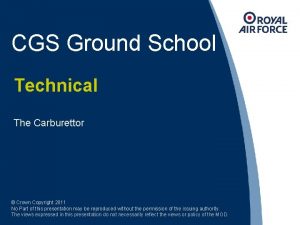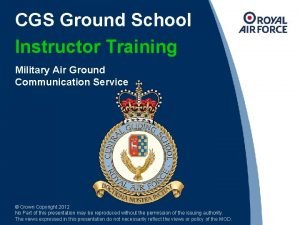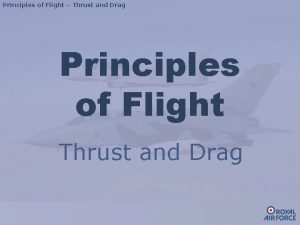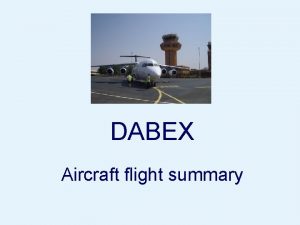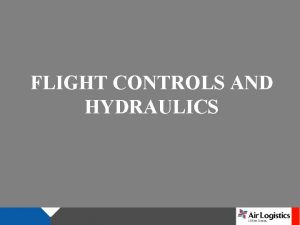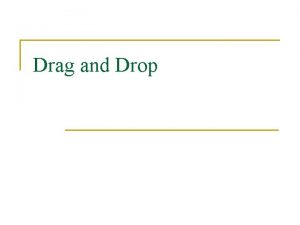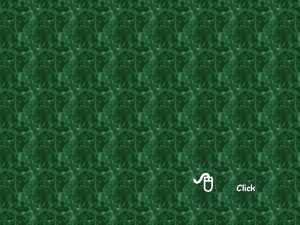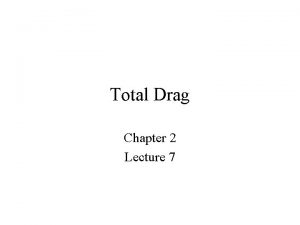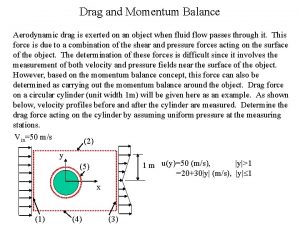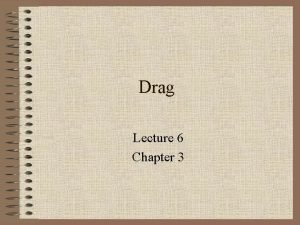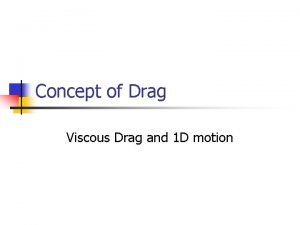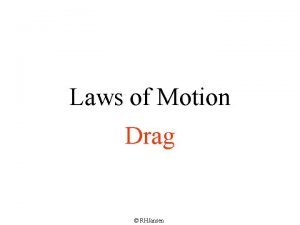CGS Ground School Principles Of Flight Drag Crown





























- Slides: 29

CGS Ground School Principles Of Flight Drag © Crown Copyright 2012 No Part of this presentation may be reproduced without the permission of the issuing authority. The views expressed in this presentation do not necessarily reflect the views or policy of the MOD.

Total reaction In flight, an aircraft produces an aerodynamic force called the total reaction. Drag is the component of the total reaction acting parallel to the relative airflow. RAF Total reaction Drag

Drag is normally considered under two main headings. 1. Zero Lift Drag. 2. Lift Dependent Drag.

Zero lift drag When an aircraft is flying at an angle of attack which gives zero lift, the resultant of the forces acting parallel and opposite to the direction of flight is called Zero Lift Drag. Zero lift drag can be sub-divided into: 1. Surface Friction Drag. 2. Form Drag. 3. Interference Drag.

Surface friction drag In flight, due to the viscosity of the air, a thin layer of air adheres to the aircraft's surfaces. This thin layer of air is called the Boundary Layer and is the cause of Surface Friction Drag. The boundary layer consists of two types of airflow. 1. Laminar Flow. 2. Turbulent Flow.

The boundary layer Laminar flow, is an orderly flow of air, where successive layers of air slide over each other with little change of direction. At the transition point the laminar flow becomes turbulent. Turbulent Flow consists of many small vortices and eddies in which there is no. Transition set direction. point

The boundary layer When this happens the boundary layer thickens and the amount of surface friction drag increases. If the turbulent flow becomes very turbulent then it will break away from the wing. The point at which this occurs is called the separation point. Separation point Transition point

The boundary layer Since turbulent flow causes more drag than laminar flow, surface friction drag can be reduced by keeping the airflow laminar for as long as possible. This is achieved by keeping the wings smooth, clean and polished. Any minor imperfections, such as scratches, dead flies, water or ice on the surface will move the transition point forward and therefore increase Surface Friction Drag.

Form drag Form Drag is produced by an aircraft as it forces the air that it meets out of its way. High form drag Low form drag Form drag can be minimised by Streamlining.

Form drag The effectiveness of streamlining an object can be seen using the following example: If a flat, circular plate is placed in a wind tunnel and it is found that 20 men are required to prevent the plate from moving:

Form drag The effectiveness of streamlining an object can be seen using the following example: Then streamlining the same plate, by making it into a ball of the same diameter, will only require 10 men to prevent it from moving (drag reduced by 50 %).

Form drag The effectiveness of streamlining an object can be seen using the following example: Further streamlining the same plate will require only 1 man to prevent it from moving (drag reduced by 95 %).

Interference drag Interference Drag is caused by the air flowing around junctions such as wing to fuselage, tailplane to fin etc. It can be reduced by fairings or fillets at these junctions.

Lift dependent drag When an aircraft produces lift it also produces extra drag, called lift dependent drag. This drag consists of: 1. Vortex (Induced) drag. 2. Increments of Zero lift drag.

Vortex drag Vortex Drag is caused by the difference in pressure above and below the wing. Air from the high pressure area beneath the wings spills around the wing tips, to the low pressure area above the wings. This creates large wing tip vortices. Low pressure High pressure

Vortex drag The When flow thearound two airflows the wing meet tipsatwill thecause wing trailing air underneath edge they are thetravelling wings toin start different flowing directions, towards the which wing causes tips, the formation of trailing edge and vortices. the air above the wings to start flowing towards the fuselage.

Vortex drag There are four factors which affect vortex drag: 1. Wing Shape. 2. Aspect Ratio. 3. Speed. 4. Weight.

Vortex drag - wing shape Vortex drag is greatest where the vortices are largest, that is at the wing tips. An elliptical wing (such as the Spitfire) reduces the size of the wing tip vortices. In most modern gliders a combination of wing taper and washout produces a similar effect, but only at one angle of attack. Both of these techniques therefore reduce vortex drag.

Vortex drag – aspect ratio A wing's aspect ratio is the ratio of its span to mean chord. A high aspect ratio wing is long and thin. A low aspect ratio wing is short and wide.

Vortex drag – aspect ratio The pressure differential on a high aspect ratio wing is lower than a low aspect ratio wing. Additionally the airflow is affected by the spanwise flow for a shorter time on a high aspect ratio wing due to the smaller chord length. Both of these effects cause a high aspect ratio wing to have less vortex drag than a low aspect ratio wing. Low pressure High pressure

Vortex drag – speed An increase in speed produces a smaller vortex because the air flowing under and over the wing has less time to be influenced by spanwise flow. In fact Lift Dependent Drag is inversely proportional to the square of the speed.

Vortex drag – weight In level flight: Lift = Weight. Any increase in weight therefore requires an increase in lift. If the speed is not increased, then the angle of attack must be increased to generate the extra lift. This will produce a greater pressure differential between the upper and lower wing surfaces, Liftand therefore stronger vortices. An increase in weight therefore increases vortex drag. Weight

Increments of zero lift drag Form drag When an aircraft is pitched up to increase the angle of attack in order to produce more lift, a larger frontal area is presented to the airflow, therefore increasing form drag. Surface friction drag If the angle of attack is increased to produce more lift, the transition point in the boundary layer moves further forwards. As such the boundary layer is thicker over a larger part of the wing therefore increasing surface friction drag. Interference drag Transition point As lift is produced the air is deflected spanwise. This spanwise flow increases the interference drag where it interacts with the airflow around the fuselage.

Total drag The Total Drag of an aircraft is the sum of the Zero Lift Drag and Lift Dependent Drag of all its parts. Total drag Zero lift drag Surface friction drag Form drag Interference drag Lift dependent drag Increments of surface friction drag, form drag and interference drag Vortex drag

Total drag Drag airspeed: Total drag iswith the be sum of both zero lift minimum drag and drag lift occurs It canvaries therefore clearly seen that dependent when zero drag. lift drag and lift dependent drag are equal, and Zero drag varies as thestalling squarespeed, of the Total airspeed. As increases from Drag notspeed atliftthe lowest possible airspeed. reduces due to the rapid reduction in lift dependent drag. Lift dependent varies inversely asspeed the square of the This continues drag until the minimum drag is reached. airspeed. As speed increases above the minimum drag speed Total drag increases due to the rapid increase in zero lift drag. Zero lift drag Stalling speed Drag Total drag Lift dependent drag Speed for minimum drag IAS

Drag equation When an airflow is brought to rest in a tube facing into the airflow, the pressure exerted (drag) is given by the equation: Drag = 1/2 ρV 2 S Where: ρ = Air density. V = Velocity. S = Surface area.

Drag equation When a flat plate is placed in an airflow the air is not brought to rest, but flows around the edges causing turbulence to the rear of the plate. This turbulence reduces the pressure behind the plate, creating a "suction". Because of this suction the drag equation is altered to Drag = 1. 28 x (½ρV²S). The figure 1. 28 is a correction to theoretical drag equation and is called the coefficient of drag (CD). Each body will have its own coefficient of drag (CD) such as 1. 28 for a flat plate. Therefore the drag equation for any given body is: Drag = CD x (½ρV²S)

Drag equation The CD for any given body will alter as the attitude of the body is changed. The CD of an aerofoil therefore varies as the angle of attack changes. Stalling angle 0. 32 Normal angles of flight Drag Coefficient 0. 28 0. 24 0. 20 0. 16 0. 12 0. 08 0. 04 -4° 0° 4° 8° 12° 16° 20° Angle of attack

THE END Any Questions?
 Iraad definition project management
Iraad definition project management Cgs 3269
Cgs 3269 Cgs 2531
Cgs 2531 Cgs 1060
Cgs 1060 Cgs 3763 ucf
Cgs 3763 ucf Cse 598
Cse 598 Cgs 3763
Cgs 3763 Cgs 3175
Cgs 3175 Webspace2
Webspace2 Cgs 2518 fsu
Cgs 2518 fsu Cgs medicare credit balance report
Cgs medicare credit balance report Cgs cusip
Cgs cusip Cgs 3763
Cgs 3763 Cgs 3763
Cgs 3763 Cgs 3269
Cgs 3269 Cgs css
Cgs css Principles of flight air cadets
Principles of flight air cadets Principles of flight air cadets
Principles of flight air cadets Principles of flight air cadets
Principles of flight air cadets Crown point high school rds
Crown point high school rds Gestalt principles figure ground
Gestalt principles figure ground Enloe flight school
Enloe flight school Flight training management software
Flight training management software P factor
P factor Mt sac flight school
Mt sac flight school Work vs power
Work vs power Lamar gant
Lamar gant Power verbs
Power verbs Human crutch two person drag
Human crutch two person drag Compressible flow
Compressible flow
